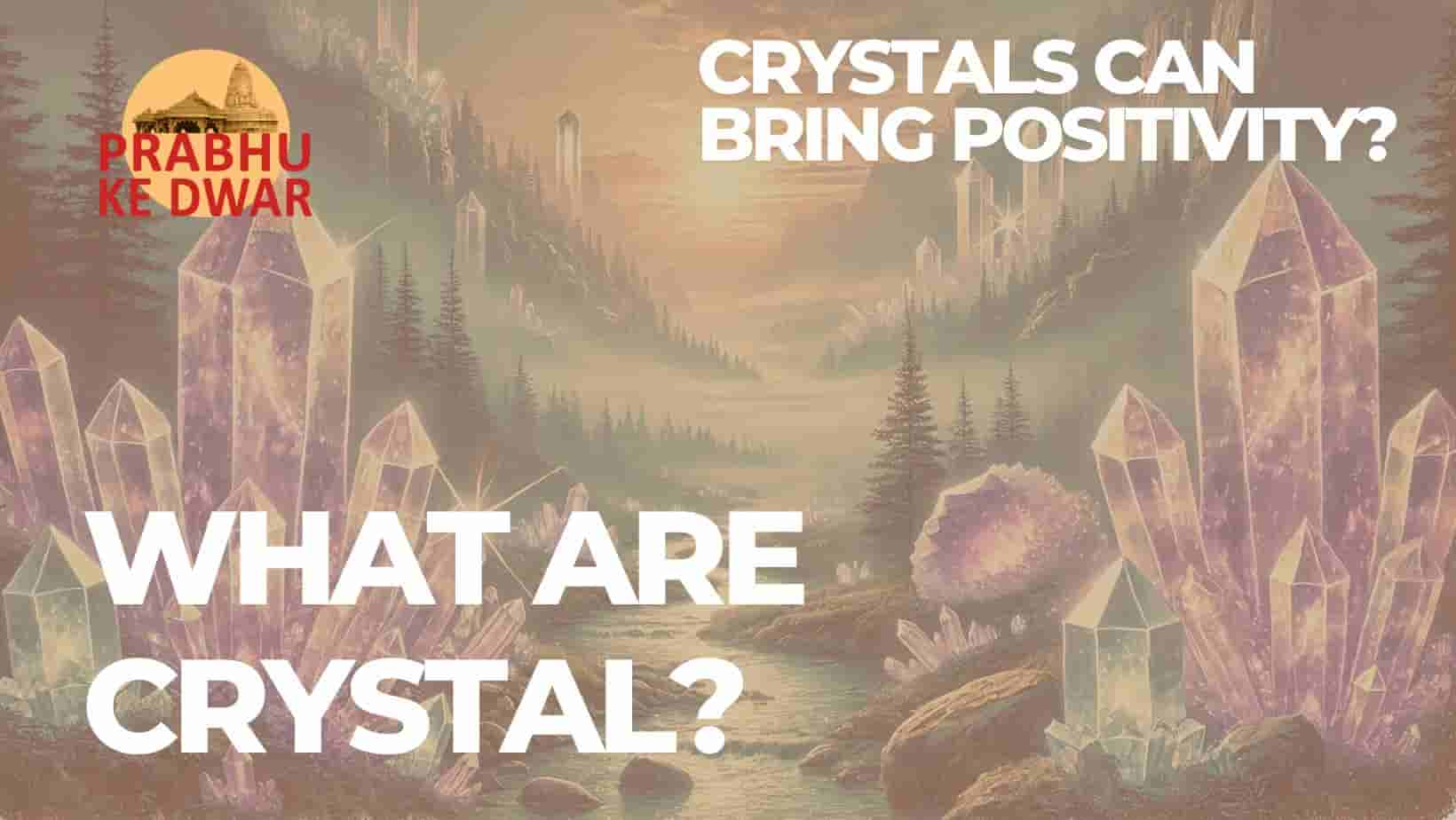Crystals have captivated human imagination for millennia, offering not only dazzling beauty but also an intrinsic connection to the Earth’s energy. As a dedicated crystal expert, I’ve spent countless hours studying these natural wonders, exploring their formation processes, and uncovering the secrets behind their mystical properties. In this comprehensive guide, we will dive deep into the fascinating journey of crystal formation—from the raw elements of nature to the emergence of exquisitely structured minerals that carry ancient energy and healing power.
Table of contents [Show]
- 1 Introduction to Crystals
- 2 The Science Behind Crystal Formation
- 3 Geological Conditions: Crystals Born from Earth
- 4 Metaphysical Perspectives: The Energy Within
- 5 The Art and Science of Crystal Cultivation
- 6 The Journey of a Crystal: From Formation to Function
- 7 Modern Applications and the Future of Crystal Science
- 8 Embracing the Magic: How Crystals Enhance Our Lives
- 9 Conclusion
Introduction to Crystals
Crystals are more than just beautiful formations; they are nature’s artwork, sculpted over millennia through a delicate interplay of heat, pressure, and time. At their core, crystals are solid materials whose atoms are arranged in highly ordered, repeating patterns extending in all three spatial dimensions. This precise arrangement not only determines their geometric beauty but also their physical properties. Whether you are a seasoned collector or a curious beginner, understanding how crystals form can deepen your appreciation for these natural wonders.
For those looking to begin their exploration into crystal magic, consider exploring this in-depth Beginner's Guide to Crystal Magic. This resource breaks down the basics and helps you tap into the fascinating world of crystal energies.
The Science Behind Crystal Formation
The Role of Temperature and Pressure
At the heart of crystal formation lies the process of crystallization, a phenomenon where a solid forms with a highly organized atomic structure. This process begins when molecules in a liquid or gas come together as the conditions of temperature and pressure shift. When the environmental conditions become just right, the atoms or molecules start arranging themselves into a repetitive lattice pattern, forming the seed of a crystal.
Temperature plays a critical role in this process. As the liquid cools, it loses energy, allowing the molecules to slow down and align more systematically. Conversely, high-pressure conditions can force molecules closer together, enhancing the chances for bonding and the creation of a crystalline structure. These delicate conditions, often present deep within the Earth or in cooling magma, lead to the birth of various crystals.
Nucleation: The Birth of a Crystal
Before a crystal can grow, a phenomenon known as nucleation must occur. Nucleation is the initial stage where a small cluster of atoms or molecules begins to form an ordered structure. This tiny “seed” acts as a template that attracts more atoms, which then attach to it. Over time, these clusters grow larger, evolving into fully formed crystals.
There are two types of nucleation:
- Homogeneous Nucleation: This occurs spontaneously and uniformly throughout the liquid without any external surfaces or impurities.
- Heterogeneous Nucleation: This is more common in nature and occurs on pre-existing surfaces or impurities that provide a scaffold for atoms to adhere to.
Once nucleation begins, the growth process can take thousands to millions of years, resulting in the diverse array of crystal sizes and shapes observed in nature.
Crystal Lattice and Structure
The unique structure of a crystal is defined by its lattice—the orderly, geometric array in which its atoms are arranged. Each crystal type exhibits a distinct lattice pattern, which directly influences its physical properties, such as cleavage, hardness, and optical characteristics. For instance, quartz crystals, one of the most ubiquitous and studied minerals, form hexagonal prisms with a consistent and repeating structure that accounts for their exceptional clarity and durability.
The process of lattice formation is an intricate dance of physics and chemistry. As atoms align themselves, they form bonds that create a stable structure. Even slight variations in environmental conditions can lead to defects or variations in the lattice, resulting in the unique characteristics of each individual crystal.
Geological Conditions: Crystals Born from Earth
Magmatic and Hydrothermal Processes
Many crystals are born from the cooling and solidification of magma beneath the Earth’s surface. As magma cools, minerals crystallize at different temperatures—a process known as fractional crystallization. Early-formed crystals might sink or float depending on their density, interacting with other minerals and evolving into complex, multi-mineral deposits.
Hydrothermal processes also play a pivotal role in crystal formation. In these environments, hot, mineral-rich water circulates through cracks and fissures in rocks. As the water cools or reacts chemically with the surrounding rock, the minerals dissolved in the fluid begin to crystallize along the walls of these cavities. This is how many beautiful vein crystals, such as amethyst and citrine, are formed.
Sedimentary Processes and Weathering
Not all crystals are formed in the fiery depths of the Earth. Some are born from the slow and steady processes of weathering and sedimentation. Over time, rocks break down, and minerals are freed to recombine under new conditions, often forming secondary crystals. These processes may not require the extreme conditions of magmatic or hydrothermal systems, but they still produce crystals with distinctive properties that can be harnessed for both aesthetic and energetic purposes.
Beyond their scientific allure, crystals have been revered for their energetic and healing properties across cultures and epochs. Ancient civilizations believed that crystals were imbued with spiritual energy, capable of channeling and balancing life forces. The very structure of crystals, with its regular and harmonious geometry, was seen as a reflection of the order in the cosmos.
Ancient Wisdom and Modern Applications
In ancient Egypt, Mesopotamia, and India, crystals were not just ornamental—they were considered powerful tools for healing and divination. Healers used crystals to balance the body’s energy centers, a practice that continues today in the form of crystal healing therapies. Modern crystal enthusiasts blend these ancient insights with contemporary scientific understanding to create a holistic approach to wellness.
For a deeper exploration into the mystical properties and the ancient secrets behind crystal energy, you might enjoy reading about the Ancient Crystal Energies Unveiled. This article delves into how our ancestors harnessed the natural power of crystals, a wisdom that still resonates in today’s holistic practices.
The Vibrational Nature of Crystals
One of the key aspects of crystal energy lies in their vibrational frequencies. Every crystal resonates at a particular frequency, and proponents of crystal healing believe that these vibrations can interact with the human energy field. When a crystal is placed near the body, it is thought to help realign the body's subtle energy, promoting balance and healing. Although the scientific community continues to study these effects, the experiential benefits reported by many crystal enthusiasts add an undeniable layer of intrigue and value to their use.
The Art and Science of Crystal Cultivation
Natural Formation vs. Cultivated Crystals
While nature provides us with some of the most spectacular crystals, the demand for these beautiful formations has led to the development of techniques for growing crystals in controlled environments. Laboratory-grown crystals are created using methods that mimic natural processes, such as the slow evaporation of solutions or controlled cooling of molten materials. These cultivated crystals share the same chemical composition and structural properties as their naturally occurring counterparts, but they can be produced in a fraction of the time.
The ability to cultivate crystals has had a profound impact on various industries, including electronics, optics, and jewelry. In the realm of metaphysical healing, cultivated crystals offer a sustainable alternative for those who wish to harness their energy without depleting natural resources.
Methods of Cultivation
One common method for growing crystals in a laboratory is the solution growth method. In this process, a saturated solution of the desired mineral is allowed to slowly evaporate, leading to the formation of crystals. Another technique is the hydrothermal method, which utilizes high pressure and temperature to dissolve minerals and then precipitate them out as they cool. Both techniques require careful control of environmental conditions to ensure that the crystals form with the desired purity and structure.
Whether formed naturally or cultivated in a lab, the process of crystal growth is a testament to the beauty and complexity of nature’s design.
The Journey of a Crystal: From Formation to Function
Stages of Crystal Development
- Nucleation: The initial gathering of atoms into a structured seed.
- Growth: The gradual addition of atoms to the nucleation site, expanding the crystal.
- Maturation: The crystal reaches its full size and exhibits well-defined facets.
- Weathering and Transformation: Over time, crystals can be altered by environmental factors, leading to new formations or the development of unique surface characteristics.
Each of these stages represents a critical chapter in the life of a crystal, reflecting the interplay between natural forces and time. Understanding these stages not only enriches our scientific knowledge but also deepens our appreciation for the elegance of natural processes.
The Symbolism of Crystals
Crystals are often seen as symbols of clarity, transformation, and balance. Their formation process—from the chaos of raw elements to the harmony of an ordered structure—mirrors the transformative journeys we experience in our own lives. This symbolism is why many people incorporate crystals into meditation, healing rituals, and as decorative elements in sacred spaces.
Whether you seek physical healing, emotional balance, or spiritual growth, the energy of crystals offers a pathway to understanding and aligning with the natural rhythms of life.
Modern Applications and the Future of Crystal Science
Crystals in Technology
Beyond their metaphysical applications, crystals play a crucial role in modern technology. Silicon crystals, for instance, are the foundation of the semiconductor industry. Their purity and precise lattice structure make them ideal for manufacturing computer chips and other electronic components. This dual role—bridging the gap between ancient mysticism and modern science—highlights the multifaceted nature of crystals.
Sustainable Practices in Crystal Harvesting
As the demand for natural crystals grows, so does the need for sustainable and ethical harvesting practices. Responsible mining and cultivation ensure that we can enjoy the benefits of these natural treasures without compromising the environment. Many crystal enthusiasts advocate for ethical sourcing, emphasizing that the energy of a crystal is enhanced by the respect shown to the Earth during its extraction.
Research and Innovation
Ongoing research into crystal formation continues to reveal fascinating insights into both geological processes and material science. Innovations in crystal growth technology are paving the way for new applications in renewable energy, quantum computing, and even medicine. The future of crystal science is bright, as researchers and enthusiasts alike work together to unlock the secrets of these mesmerizing structures.
Embracing the Magic: How Crystals Enhance Our Lives
The journey of a crystal from its formation deep within the Earth to its use as a tool for healing and transformation is a story of wonder, resilience, and connection. Crystals remind us that even in the most challenging conditions, beauty can emerge. Whether used as a focus for meditation, a tool for healing, or as a cornerstone in modern technology, crystals continue to influence our world in profound ways.
For many, crystals are more than just physical objects—they are living embodiments of the Earth’s energy. They teach us about growth, transformation, and the importance of patience. As you incorporate crystals into your daily life, take a moment to appreciate the long journey each one has undertaken, and the intricate dance of natural forces that made its existence possible.
Conclusion
The formation of crystals is a fascinating process that marries the principles of science with the mysteries of nature. From the initial stages of nucleation to the complex interplay of geological and environmental factors, each crystal carries within it the story of the Earth’s evolutionary journey. As both scientific marvels and metaphysical treasures, crystals invite us to explore not only the physical world but also the deeper dimensions of energy and spirit.
By understanding how crystals form, we not only appreciate their beauty on a molecular level but also their potential to influence our well-being. Whether you are drawn to their visual allure, their energetic properties, or their technological applications, crystals offer endless opportunities for exploration and growth. Embrace the magic of crystals, and let their timeless journey inspire your own path toward balance and transformation.




